What is a drug test panel?
In
regard to drug testing, “panel” is used to describe a drug or family of drugs
that are included in the screening of a drug test. Quest Diagnostics classifies
analytes and/or drugs at the “parent” and “child” level. For example, a substance abuse panel (SAP) that
includes the parent drug opiates will also test for its children, morphine and
codeine.
What to include in your drug test panel
Drug test panels vary in two major ways.
- The panel
of drugs included
- The initial screening and confirmatory
cutoff levels
Drug
test panels can be highly customizable, depending on the testing laboratory,
and may fit various and specific requirements from an employer. It is also important
to keep in mind that all drugs and cutoffs included in any drug test panel may
be subject to state laws and federal regulations such as the U.S. Department of
Transportation.
DOT regulations
Regulated drug tests, as they are commonly referred to,
fall into the category of “safety-sensitive” workplace drug testing programs.
The U.S. Department of Transportation and all the agencies which fall under its
jurisdiction must follow strict workplace drug testing guidelines for a urine
or blood alcohol collection, with drug type and cutoff levels being two of the main
mandates of the test.
State laws
Drug testing state
laws vary across the country. While many states permit all types of drug
testing, some states have unique requirements and limitations. For instance,
Maryland only allows hair specimens to be used for pre-employment
drug testing and Vermont prohibits the use of oral fluid drug testing.
Drug testing laws are complex, inconsistent, and are constantly changing. Take marijuana, for instance. Today, 33 states and Washington, D.C. have comprehensive medical marijuana laws and 9 states and Washington, D.C., have recreational marijuana laws. Although companies turn to drug-free workplace programs to help keep employees safe and productive, many companies have questions about workplace drug testing policies and how marijuana legislation may impact those programs.
Drug use in the American workforce
Many employers refer to the Quest Diagnostics Drug Testing Index™ when determining which drugs to include in a workplace drug testing program. This annual analysis of millions of workplace drug test results shows positivity rates by drug category, testing reason, specimen type, and workforce category.
Industry Insights
In the past year, Quest Diagnostics examined the analytics of specimens tested by our laboratories to gain a more thorough understanding of how and why companies drug test. The DTI Industry Insights offers employers in-depth information about which industries experience higher drug positivity, which may ultimately affect workplace safety. The analysis provides industry-specific insights based on objective lab data identifying the presence of several drugs including marijuana, amphetamines, cocaine, and opiates across a nationally representative workforce population.
What are the most common urine drug test panels?
With hundreds of different combinations of detectable
drugs and cutoff levels, there’s a urine testing panel for almost any reason
for drug testing. Our most commonly requested urine drug test is a 5-panel that
screens for the presence of amphetamines, cocaine, marijuana, opiates,
and phencyclidine (PCP).
The more drugs included in a drug test panel; the
more extensive an employer’s drug testing program may be. When researching for
the appropriate mix of tests for a drug test program, employers may run into
language that encapsulates the complexity of panels in very simple terms like
“10-panel” or “12-panel.” These shorthand names are common and can help labs
and employers with drug test experience to understand what panels they are
looking for.
Designations like “12-panel”, or “13-panel”, do not reflect an exact count of drugs included in our panels. At Quest, the drug test panel with the most drug/analytes included in it will be labeled as a 10-panel plus whatever add-on drugs may be included. For example, if a customer is requesting a 10-panel urine drug test with oxycodone, the drug test panel will read as “SAP 10-panel + Oxycodone”. Another example would be our 5-panel that screens for 6-Acetylmorphine and MDA-Analogues. The panel name will read as “SAP 5-panel + 6-AM/MDA”.
Visit our website to see a more extensive breakdown of drugs and cutoff levels included in our five most commonly requested unit codes for urine drug tests.
Selecting the right drug test panel for
your workplace drug testing program can be complicated. To make it simpler, contact
a Quest Diagnostics representative for more information about our drug testing
panels.
For more information about drug testing, contact us online.
 Your Privacy Choices
|
Privacy Notices
|
Terms
|
Language Assistance / Non-Discrimination Notice | Asistencia de Idiomas / Aviso de no Discriminación | 語言協助 / 不䈚視通知
Your Privacy Choices
|
Privacy Notices
|
Terms
|
Language Assistance / Non-Discrimination Notice | Asistencia de Idiomas / Aviso de no Discriminación | 語言協助 / 不䈚視通知
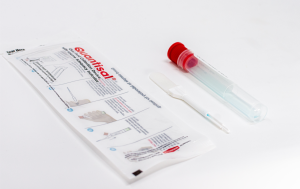
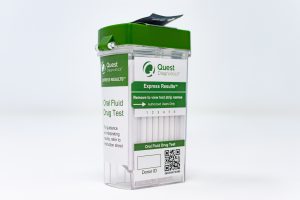
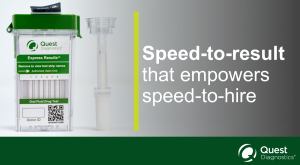
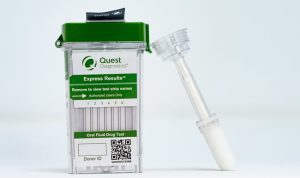


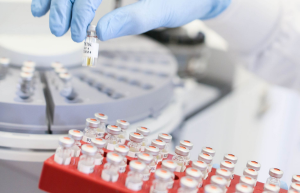
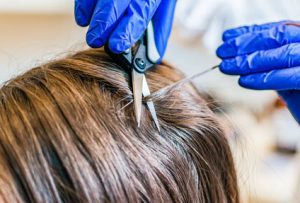
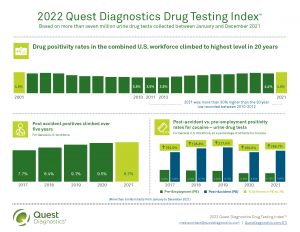





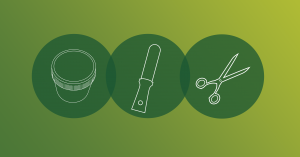




What is a drug test panel?
In regard to drug testing, “panel” is used to describe a drug or family of drugs that are included in the screening of a drug test. Quest Diagnostics classifies analytes and/or drugs at the “parent” and “child” level. For example, a substance abuse panel (SAP) that includes the parent drug opiates will also test for its children, morphine and codeine.
What to include in your drug test panel
Drug test panels vary in two major ways.
Drug test panels can be highly customizable, depending on the testing laboratory, and may fit various and specific requirements from an employer. It is also important to keep in mind that all drugs and cutoffs included in any drug test panel may be subject to state laws and federal regulations such as the U.S. Department of Transportation.
DOT regulations
Regulated drug tests, as they are commonly referred to, fall into the category of “safety-sensitive” workplace drug testing programs. The U.S. Department of Transportation and all the agencies which fall under its jurisdiction must follow strict workplace drug testing guidelines for a urine or blood alcohol collection, with drug type and cutoff levels being two of the main mandates of the test.
State laws
Drug testing state laws vary across the country. While many states permit all types of drug testing, some states have unique requirements and limitations. For instance, Maryland only allows hair specimens to be used for pre-employment drug testing and Vermont prohibits the use of oral fluid drug testing.
Drug testing laws are complex, inconsistent, and are constantly changing. Take marijuana, for instance. Today, 33 states and Washington, D.C. have comprehensive medical marijuana laws and 9 states and Washington, D.C., have recreational marijuana laws. Although companies turn to drug-free workplace programs to help keep employees safe and productive, many companies have questions about workplace drug testing policies and how marijuana legislation may impact those programs.
Drug use in the American workforce
Many employers refer to the Quest Diagnostics Drug Testing Index™ when determining which drugs to include in a workplace drug testing program. This annual analysis of millions of workplace drug test results shows positivity rates by drug category, testing reason, specimen type, and workforce category.
Industry Insights
In the past year, Quest Diagnostics examined the analytics of specimens tested by our laboratories to gain a more thorough understanding of how and why companies drug test. The DTI Industry Insights offers employers in-depth information about which industries experience higher drug positivity, which may ultimately affect workplace safety. The analysis provides industry-specific insights based on objective lab data identifying the presence of several drugs including marijuana, amphetamines, cocaine, and opiates across a nationally representative workforce population.
What are the most common urine drug test panels?
With hundreds of different combinations of detectable drugs and cutoff levels, there’s a urine testing panel for almost any reason for drug testing. Our most commonly requested urine drug test is a 5-panel that screens for the presence of amphetamines, cocaine, marijuana, opiates, and phencyclidine (PCP).
The more drugs included in a drug test panel; the more extensive an employer’s drug testing program may be. When researching for the appropriate mix of tests for a drug test program, employers may run into language that encapsulates the complexity of panels in very simple terms like “10-panel” or “12-panel.” These shorthand names are common and can help labs and employers with drug test experience to understand what panels they are looking for.
Designations like “12-panel”, or “13-panel”, do not reflect an exact count of drugs included in our panels. At Quest, the drug test panel with the most drug/analytes included in it will be labeled as a 10-panel plus whatever add-on drugs may be included. For example, if a customer is requesting a 10-panel urine drug test with oxycodone, the drug test panel will read as “SAP 10-panel + Oxycodone”. Another example would be our 5-panel that screens for 6-Acetylmorphine and MDA-Analogues. The panel name will read as “SAP 5-panel + 6-AM/MDA”.
Visit our website to see a more extensive breakdown of drugs and cutoff levels included in our five most commonly requested unit codes for urine drug tests.
Selecting the right drug test panel for your workplace drug testing program can be complicated. To make it simpler, contact a Quest Diagnostics representative for more information about our drug testing panels.
For more information about drug testing, contact us online.